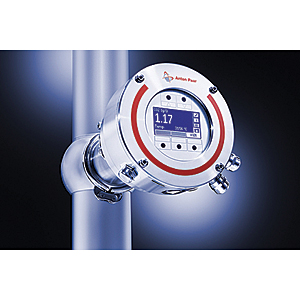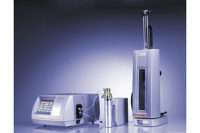As beverage-makers continue to expand their brands with new variations and launch new products into the marketplace, lab testing equipment retains its ever-important role in the industry.
|
At the same time, many beverage companies are consolidating their operations, resulting in fewer but larger facilities, says Marc Epstein, vice president of Terriss Consolidated Industries Inc., Asbury Park, N.J. Oftentimes, this leaves more money to spend on testing equipment, but companies still are putting a priority on getting the best value for their equipment while maintaining the same standards, he notes.
Overall, testing has to meet governmental requirements, such as good manufacturing practices (GMP) and hazard analysis and critical control points (HACCP), as well as consumer taste requirements regarding sweetness, carbonation and more, Epstein explains.
“When it comes to product protection, you start from A and you go to Z,” he says. “You have the actual safety and taste of the ingredients, how the production equipment is working, whether it’s clean, whether the cleanliness of the plant is suitable, [etc.]”
Some of the newest testing developments are biodegradable cleansers and lubricants, he notes. Operators also seek the ability to make disinfectants on-site inexpensively, he adds. As a result, Terriss Consolidated Industries offers biodegradable cleansers and machinery to create disinfectants as well as equipment that tests raw materials and bottled beverages, he adds.
After using disinfectants, however, testing often needs to be done to ensure that the disinfectant has been completely removed, notes Ernest Rector III, market manager for the industrial and water and wastewater sections of LaMotte Co., Chestertown, Md. The company offers quaternary ammonium compound (QAC) test strips for this reason. However, some customers were having trouble determining that the QAC was completely removed using the strips because the first increment ranged from 0 to 50 parts per million, he explains. Therefore, LaMotte introduced a newer strip with a lower range — the first increment now ranges from zero to 10 parts per million — to more precisely show that the surface tested is QAC-free, he says.
It also introduced new BioPaddles for on-site micro testing for bacteria such as salmonella, listeria and E. coli, Rector says. Although an instantaneous test for bacteria is not possible yet, tests are getting faster. It used to take 24-48 hours to get results, but now some tests offer results in approximately 18 hours, he says.
On the packaged beverage side, LaMotte waterproofed its handheld turbidity meters and added USB ports to them, enabling operators to monitor levels for their own knowledge or for reporting to the U.S. Food and Drug Administration (FDA), Rector says. This development showcases the industry’s move to digital options, which have become more popular within the last decade, he notes.
Along those lines, Bluetooth and cloud-based technologies will be the “wave of the future,” Rector adds. Within the next year, some of LaMotte’s next-generation meters will have Bluetooth and cloud storage capabilities built into them, he says.
These technological advancements also pertain to balances in testing laboratories. Over the years, Sartorius AG’s balances have taken on features such as automatic motorized leveling, internal calibration, touchscreens, and Web Services and Bluetooth communication protocols, says Jennifer Camarda, sales specialist for premium balances and software for the Göttingen, Germany-based company. In order to ensure that beverages are formulated correctly and verify that they meet label claims, Sartorius AG offers laboratory balances that determine the weight of a product so that testing analyses that are performed will produce accurate results, she explains. Earlier this year, the company launched three new standard balances as well as the Cubis Individual balance, which has the ability to download specific applications, called Q-Apps, directly into the balance by means of an SD card.
“Q-Apps are easily integrated into the balance’s software and guide users step-by-step through a specific weighing workflow, ensuring thorough compliance with written standard operating procedures,” Camarda says. “Moreover, Q-Apps also enable the balance to be connected to and also exchange data with higher-level laboratory information management systems via Web Services, a qualified and recognized Internet-based protocol. As a result, Q-Apps tremendously increase efficiency and fail-safe reliability in the weighing process, thus saving valuable time and money in laboratories.”
Wallace Harvey, director of sales and marketing for Ashland, Va.-based Anton Paar USA, adds that testing instruments and technology have become more accurate, advanced and smaller in size over the years. In the future, the industry will continue to evolve with improvements in automation, data acquisition, connectivity and modularity, along with miniaturization and portability, he says.
Anton Paar USA offers a range of equipment designed to test and measure carbon dioxide, dissolved oxygen, brix, alcohol content and more. Most recently, it launched its CBoxQC and Carbo 520 products in its beverage portfolio for measuring carbon dioxide and/or oxygen in process or laboratory settings. These tests help to ensure the consistency of the end product.
Likewise, MicroThermics Inc. offers a system to maintain consistency from beverage development through to the production plant.
“Our equipment accurately simulates the entire production process right in the laboratory,” says David Miles, vice president of the Raleigh, N.C.-based company. “This avoids expensive failed plant trials and re-working of formulations when going to the plant with new or reformulated products.
“You can literally take, say, five formulations of three different beverages and process them during the day and have those results the same day to find out which formulations work or don’t work,” he explains. “Basically, you can get what turns out to be months’ worth of work in the plant or in a pilot plant done in a day or two days at a much lower cost.”
Plus, operators that don’t need as much flexibility can save even more by investing in MicroThermics’ new Veros equipment. Veros is approximately 15-20 percent less expensive than the company’s bigger equipment, but it does not sacrifice the process simulation accuracy, Miles says. It also is smaller in size, quicker and easier to use, and targeted specifically at fluid applications, he says.






